9 Key Strategies for Agencies Doing Emotional Marketing

As a marketing agency, you’re always looking for new ways to reach consumers.
Perhaps it’s time that you take a step back and look at the basics of marketing: emotions.
Real quick, think of your top 3 favorite brands.
How do they make you feel?
Happy?
Excited?
Prestigious?
Do you feel like you trust them?
Whatever it is, it’s obviously a positive emotion.
Maybe you felt that way immediately after learning about those companies. Or maybe it wasn’t until you saw a specific advertisement that you started liking them.
Now think of your clients’ target audiences.
How do you think they feel about your client’s brand?
If they don’t have an emotional connection to that brand, you’re just throwing money down the drain in the form of wasted potential.
But we’ve got you covered.
For this article, we’ll discuss:
- The basics of emotional marketing and why you should care about it.
- 9 emotional marketing strategies that will help you win over consumers for your agency’s clients.
- How these emotional marketing strategies are applied to marketing campaigns.
To start off, let’s discuss a little background on emotional marketing and some stats that prove it’s a worthwhile investment.
In a rush? Want to download this article as a PDF so you can easily take action on it later? Click here to download this article as a PDF guide.
Emotional Marketing Basics
In psychology, there’s two main routes to persuasion: central route persuasion and peripheral route persuasion.
Central route persuasion is used when you’re trying to convince someone using an evidence-based approach. And when your audience is actively engaged with the research process.
But peripheral route persuasion is where emotions come into play. This is where consumers might not put in the effort to do research.
Instead, they look at peripheral cues such as emotion to make a judgement.
Think of all the TV commercials that seem completely void of practical information. What the advertising agencies are doing is trying to make viewers connect the brand with a specific emotion or feeling.
For example, those classic GEICO Caveman commercials.
At surface level, they seem meaningless.
But the comedy in the commercials gets people to see GEICO’s personality.
And it can raise more awareness for GEICO as people talk about the commercials.

Emotion is at the heart of consumer behavior.
A consumer’s emotional state has a profound impact on how they absorb, process and retain information about products or brands.
When you can make consumers associate a brand with positive emotions, they’ll be more likely to make a purchase.
According to emotional intelligence platform Motista, customers with an emotional connection to a brand have a 306% higher lifetime value than non-emotional customers.
Not only that, 71% of them are likely to recommend a brand too.
And in a study by Nielson, ads with strong emotional cues led to a 23% increase in sales volume.
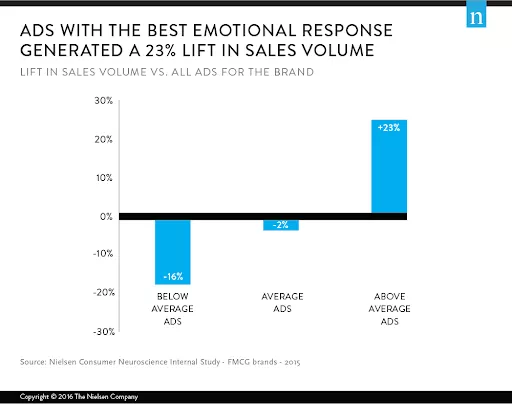
Okay, you get it. Using emotions in your marketing strategy has its benefits.
So now it’s time to start looking at some ways to use it.
Starting with ...
#1 Emotional Marketing Strategy for Agencies: Use Nostalgia
The first emotional marketing strategy on the list is the use of nostalgia.
According to food and beverage flavor manufacturer FONA, 71% of U.S. consumers prefer things that remind them of their childhood.
Nostalgia refers to emotional memories, such as going back to a place from your childhood, listening to a song from middle school, or enjoying a particular memory.
Take Spotify’s Never Ending series in 2016 for example. Spotify featured short ads featuring the characters from the 1984 fantasy film, “The NeverEnding Story.”
To stay true to the film, the ads used the original soundtrack.
With the depiction of an old movie icon, Spotify could emotionally connect with consumers that grew up in the 1980s.

And if your agency is thinking about where nostalgic content would work well, start with YouTube.
As found by Think with Google, 75% of Gen Xers on YouTube watch videos that include past events or people.

According to a study from the Association for Consumer Research, nostalgia in advertising can increase brand love. But there are cultural differences.
In collectivist countries, nostalgia advertising works best when the content is historical. And for individualistic cultures, personal nostalgia is more effective.
#2 Emotional Marketing Strategy for Agencies: Appeal to the Self-Concept
Another emotional marketing strategy involves appealing to your audience’s self-concept.
This is when you associate your client’s products or services with positive emotional states that are related to how your consumers perceive themselves.
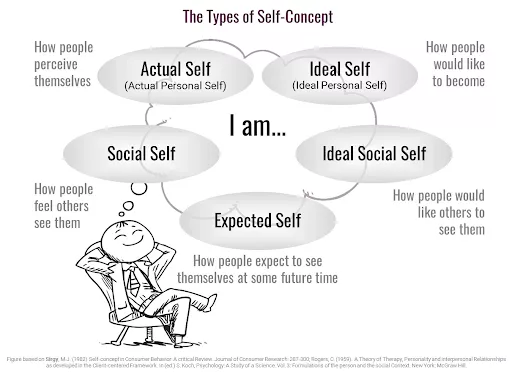
According to the Association for Consumer Research, studies have shown that when self-concept and brand image align, there’s a correlation with purchase intention.
But there are times when appealing to the self-concept may not be the best strategy.
For example, if your client’s product or service is predominantly used in public, then social approval takes over. People will make purchasing decisions based on how others will judge them.
For this, you’re better off appealing to the ideal self, or who your audience wants to be like.
As an example, think of how Old Spice ads make men think they’ll be more masculine after using Old Spice products.
#3 Emotional Marketing Strategy for Agencies: Make People Laugh
In a 2018 survey from research firm Clutch, 53% of consumers like advertisements that are humorous.
And more recently, HubSpot found that 35% of U.S. consumers remembered a recent advertisement because it was funny.

Humor is an emotional trigger that stimulates happiness, which makes people feel good about themselves and gets them to relax.
Also, it makes a brand appear more like a friend than a company trying to sell something.
In turn, it makes consumers more likely to trust your client.
#4 Emotional Marketing Strategy for Agencies: Fear
Fear is a highly influential emotion.
In fact, it’s the basis for virtually all decision-making made on the planet.
FOMO (fear of missing out) has long seen its uses in marketing and advertising.
You see, it preys on a primitive, instinctual fear that all humans share: social ostracization.
People think that if everyone else is buying your product, then they must do so too.
It’s kind of like when growing up, kids buy all the same clothes the cool kids wear.
And it’s not surprising that younger people are most prone to FOMO.
According to OptinMonster, 69% of millennials experience FOMO.
And in all, 56% of people are afraid of missing out on something if they don’t keep tabs on their social media.

As an example of subtle FOMO, take a look at a listing for a pair of men’s Adidas shoes on eBay below.

Not only is the high view count highlighted with red font, so too is the quantity sold. And above that, it reads, “Limited quantity available.”
Although I’ve been talking a lot about FOMO, fear can be applied by showing people what could happen if they don’t take action.
Commonly, it’s used by nonprofits to combat things like cigarette use, substance abuse and environmental damage.


But your agency can still use fear if your clients are in B2C or B2B commerce.
For example, if your client is a health coach, you could highlight the shortened life span that accompanies poor health.
Or for an insurance agency client, you can point out the fact that your loved ones would be in trouble if they passed away suddenly.
To illustrate, look at a Facebook post from Gerber Life Insurance down below.

#5 Emotional Marketing Strategy for Agencies: Element of Surprise
Accoridng to Scott Redick of Harvard Business Review, surprise is the most powerful marketing tool.
As he says, surprise is addictive.
In a study by scientists, they found that the human brain craves the unexpected.
If your agency creates YouTube content for a client, using surprising elements will keep viewers engaged. And you’ll start hitting your YouTube KPI targets.
But surprise isn’t just restricted to video.
You can surprise your customers with a giveaway.
You can surprise them by going above and beyond expectations.
And other ways too.
The point is, you can make your customers and prospective customers happy with pleasant surprises that show you care about them.
One of the most well-known examples of the use of surprise in marketing is Mastercard’s #PricelessSurprises.
Anyone that Tweets the hashtag has the chance to be randomly selected to receive a Priceless Surprise — ranging from a pair of headphones to spending a day with your favorite celebrity.
For the holidays, Mastercard also incentivizes customers to use their credit cards for a chance to win $1,000.

#6 Emotional Marketing Strategy for Agencies: Social Proof
Social proof is an emotional trigger associated with an individual’s belief that what others are doing reflects right behavior.
Consequently, this makes them want to copy them so they don’t look silly or out of place.
Like FOMO, it leverages that human fear of ostracization and wanting to fit in.
But it can also mean that consumers just want to know they’re getting into something that won’t leave them disappointed.
It’s why companies mention how many customers are using their platform. Or how many people are already subscribed to their newsletter.
Social proof can be seen when companies hire influencers to endorse their products.
Globally, the influencer marketing market is worth $13.8 billion, as per Statista.
And some go as far as becoming the face of the brand. Back in 2019, Papa John’s reached an $8 million deal with NBA legend Shaquille O’Neal for him to become the poster child for the restaurant chain.

Social proof can also refer to an authoritative figure or a like-minded individual providing a statement that backs your brand.
For authoritative figures, think of a dentist endorsing a toothpaste brand or a veterinarian being a guest on a webinar for a pet food company.
And for like-minded individuals, testimonials and case studies are a sure bet.
On Growbo’s homepage, you can find several testimonials from our clients.
That way, an interested prospect can see businesses like their own discuss the benefits of Growbo’s digital marketing services.
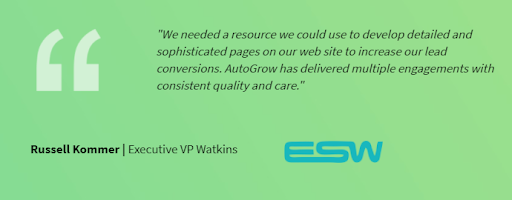
Then we have a section that highlights the big-name brands that have mentioned us before.

Case studies go more in depth than a testimonial.
A case study breaks down the problem, solution and results in great detail.
As reported by Demand Gen, 54% of B2B buyers read a case study during the purchasing journey. But I’ve seen reports that were even higher than that.
Often, case studies are converted into a gated whitepaper document.
Another option that’s less detailed than case studies are customer success stories.
Customer success stories are similar to case studies in that they identify a problem, solution and results, but it’s much more brief — making it easier to digest for the reader.
As an example, LinkedIn Marketing Solutions utilizes customer stories to social proof its platform.
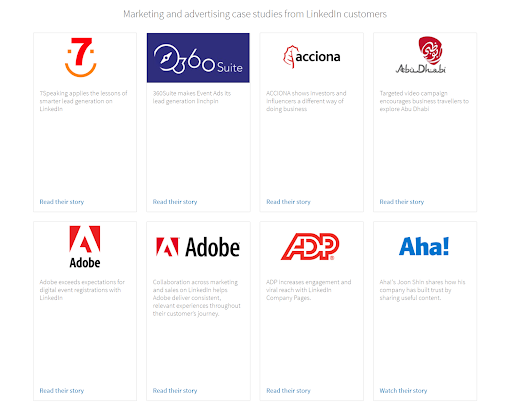
#7 Emotional Marketing Strategy for Agencies: Align Your Values With the Consumers’
Associating your brand with values that you know your client’s target audience already align with is often used as a way to influence consumers.
By aligning your product with values that consumers already find positive or desirable, you can increase emotional engagement.
For example, an American outdoor company may associate its brand with family values since camping is a popular family pastime.
In its “2020 Consumer Culture Report,” agency 5W Public Relations found that 83% of 18- to 34-year-olds (now 19-36) think it’s important that a company’s values align with their own.
And even 60% of those 55 and older agreed.
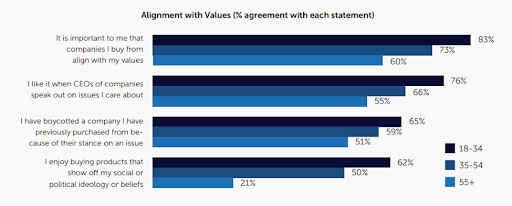
#8 Emotional Marketing Strategy for Agencies: Inspire
According to Unruly, inspiration is the second most common emotion felt in TV ads.
But inspiration can be found anywhere from a mission statement to a social media post.
You can use inspiration to make consumers take action.
Nike often posts aimed to inspire athletes and aspiring athletes.
After Tiger Woods won the 2019 Masters, Nike created an inspirational video advertisement.
In it, viewers are reminded that a 43-year-old Tiger still has the same dream as he did when he was a kid.
Moreover, it’s just inspiring that despite all that he went through with surgeries, his personal life, and 11 years between winning a major tournament, he was able to win on the big stage.
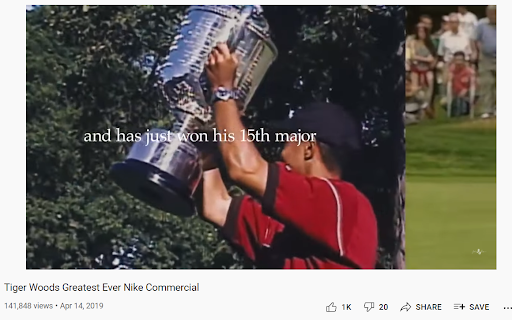
And in the entertainment industry, Sony uses slogans like “Greatness Awaits” and “Play Has No Limits” in its marketing strategy to get gamers excited about the possibilities of PlayStation.
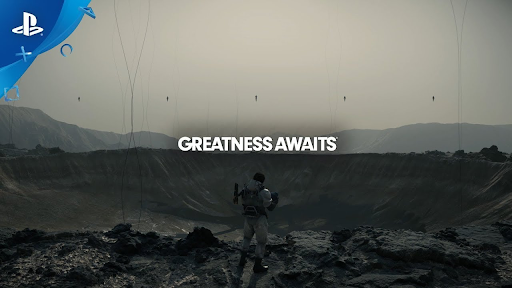
#9 Emotional Marketing Strategy for Agencies: Make Use of Powerful Stories
Emotional marketing also involves storytelling.
According to emotional marketing strategist Joe Lazauskas, storytelling lights up our brains.
And stories make it easier for us to recall information.
By telling a story, you allow your audience to relate to an emotional state. As a result, they feel a connection to your brand on some level.
As stated by Sprout Social, stories are the second most effective marketing content type among influencers.
And according to a HubSpot survey, just 20% of marketers are invested in branded storytelling.
But this is a missed opportunity.
On social media, millions of users are interested in watching stories.
According to Instagram, 58% of surveyed users say they have become more interested in buying a product after seeing it in Stories.
Keep in mind, short and sweet is a safe format choice for video storytelling.
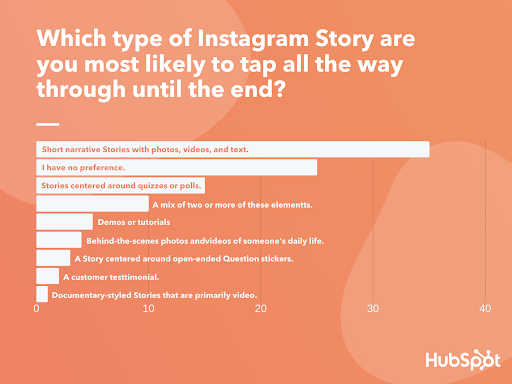
Storytelling can also be used in non-video form as well.
Most notably, in your client’s About Us page.
It’s a chance to show transparency and really let consumers know what your client is all about.
One of my favorite examples comes from Chobani.
Chobani’s About Us page tells the origin story of Chobani and a little background on the founder, Hamdi Ulukaya.
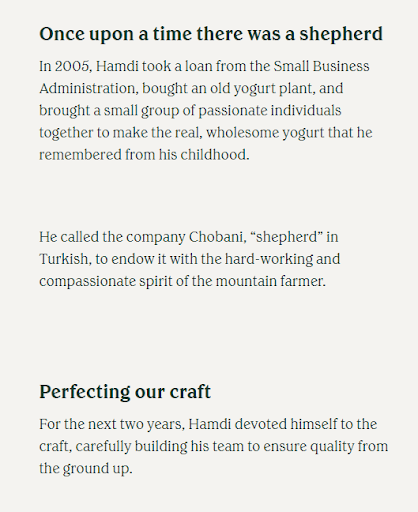
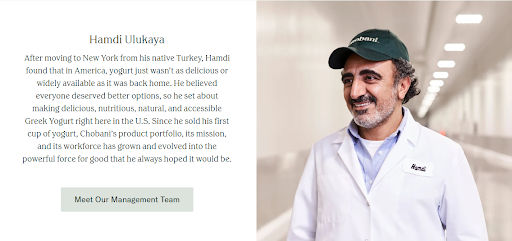
Conclusion
Download the “9 Key Strategies for Agencies Doing Emotional Marketing ” so you won’t forget to take action on it later. Click here to download it now.
If you’ve been looking to win the hearts and minds of customers, your search is over.
We’ve compiled 9 emotional marketing strategies that are sure to help you persuade consumers.
You see, using emotional marketing is one of the most powerful ways to win over consumers.
With these strategies in place, your agency will be able to sell more for all of your clients with ease.
Remember, consumers are just waiting to be convinced.
And once you reel in an emotionally motivated customer, there’s no limit to how much they’ll spend over a lifetime.
But it takes the right emotional messaging to acquire them in the first place.
If your agency is looking for help with using emotional marketing in its digital campaigns, sign up with Growbo today. Or watch a demo to learn about how our platform will help you.
Our team has plenty of experience applying these principles to grow brands online. And we would love to work with you too.
Now tell me ...
Which of these emotional marketing strategies has been successful at your agency?
Or which ones would you like to try out?
Let me know in the comments below.
Keep Growin’, stay focused.
Mark













